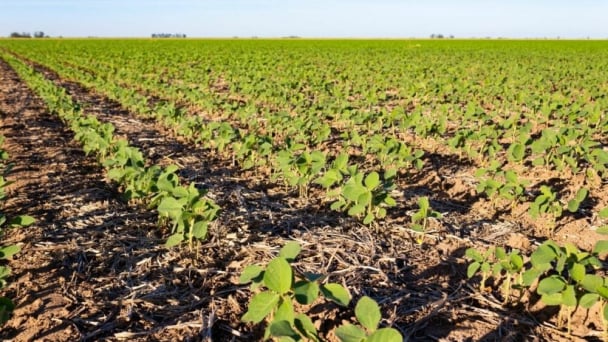May 20, 2025 | 02:06 GMT +7
May 20, 2025 | 02:06 GMT +7
Hotline: 0913.378.918
May 20, 2025 | 02:06 GMT +7
Hotline: 0913.378.918
The U.S. Department of Agriculture on Monday pegged 72% of U.S. soybeans as being in good or excellent health, in the agency’s first assessment of the season. That was in line with trade expectations and is above the 10-year average for initial soy ratings of 68%.
That came a week after initial U.S. corn conditions landed at 75% good-to-excellent (GE), well above the trade guess of 70% and the 10-year average of 71%.
Only two other years in the last two decades featured a better combination of initial corn and soy health. Corn was 76% GE and soybeans were 74% to start in 2014, and 2018 began with corn at 79% GE and soybeans at 75%.
Since 2005, initial corn and soybean conditions were both above average levels in seven years. Final corn and soybean yields both came in above USDA’s baselines in all but one year, 2022.
The 2022 harvest was marred by severe drought in the Plains with Nebraska, South Dakota and Kansas notching their worst corn and soybean yields since 2012. However, production was respectable as top growers Iowa, Illinois and surrounding states achieved strong results.
The good health of this year’s crops may not guarantee a yield above USDA’s trendline since that mark has been unbeatable for corn since 2018. USDA’s corn trend yield has been particularly debatable in the latest two years with trend set several bushels above the previous record.
The 2023 U.S. corn harvest notched a record 177.3 bushels per acre (bpa), though that was 2.3% below USDA’s trendline, the biggest such shortfall since 2020.
U.S. soybean yield fell below trend in the last two seasons but landed above in the two prior seasons, and both USDA’s 2023 and 2024 soybean trend yields of 52 bpa are extremely close to 2016’s record of 51.9.
Aside from the trendline controversy, USDA’s condition scores suggest that both crops are poised for success barring any extreme weather events, including prolonged heat, dryness or a prominent derecho as was seen in 2020.
Linear regression modeling is common in yield forecasting since it directly evaluates how much a dependent variable like yield may be explained by one or more independent variables - in this case, conditions.
Using corn conditions for week 23 to predict final yield deviation from trend results in an R-square of 0.11, meaning only 11% of the yield variation can be explained by this week’s conditions.
R-square tops out at 0.73 in weeks 29 and 30 (late July), suggesting corn conditions have max correlation with actual yield deviations in late July, though including other factors like July or August weather would enhance model reliability.
The same analysis for soybean yield deviations from trend results in a much worse R-square, which stays below 0.5 until the end of August. It is not uncommon for strong soybean yields to be associated with mid-season conditions close to 60% GE.
Karen Braun is a market analyst for Reuters. Views expressed above are her own.
(Reuters)

(VAN) Fourth most important food crop in peril as Latin America and Caribbean suffer from slow-onset climate disaster.

(VAN) Shifting market dynamics and the noise around new legislation has propelled Trouw Nutrition’s research around early life nutrition in poultry. Today, it continues to be a key area of research.

(VAN) India is concerned about its food security and the livelihoods of its farmers if more US food imports are allowed.

(VAN) FAO's Director-General emphasises the need to work together to transform agrifood systems.

(VAN) Europe is facing its worst outbreak of foot-and-mouth since the start of the century.

(VAN) The central authorities, in early April, released a 10-year plan for rural vitalization.

(VAN) Viterra marked a significant milestone in its carbon measurement program in Argentina, called Ígaris, reaching 1 million soybean hectares measured.